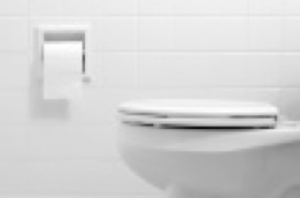In our fourth blog of the week, Jo Booth, Professor of Rehabilitation Nursing at Glasgow Caledonian University focusses on one of the longer-term issues that stroke survivors face; urinary incontinence and urges nurses to engage in supporting recovery of bladder function.
Urinary incontinence after stroke
Urinary incontinence (UI) affects around half of all acute stroke survivors in the first month, about 40% at 3 months and is still present in a third after a year. Outcomes are worse in stroke survivors with UI who are more likely to die, be severely disabled or be discharged to a care home. Urinary incontinence is a horrible consequence of stroke for the person and their families. Stroke survivors with UI are twice as likely to be depressed as those without UI and suffer huge embarrassment and loss of confidence, which affects family relationships, willingness to socialise, work and travel.
But UI is largely ignored as a target for active treatment. What we don’t seem to have grasped is that bladders can be rehabilitated. Our bladders are controlled by our brain and spinal cord and although this is partly automatic we also have voluntary control – which is why we are able to control our bladders until we decide when and where to use the toilet. Also, like leg and arm muscles, pelvic floor muscles which hold the bladder in place and help keep the sphincter closed, are striated muscle and therefore we have voluntary control over them. This means that bladder function can be the focus of rehabilitation efforts just like walking, swallowing or speaking.
So what do nurses do to support recovery of bladder function?
Ten years ago I published a paper that showed stroke nurses from three different countries (UK, China, Sweden) focused on containing bladder leakage, using pads or catheters, and did not consider treating the cause of the bladder problem by using bladder rehabilitation techniques. In my experience this situation still seems to be the case. Why is this?
Could it be because nurses see bladder and bowel work as ‘dirty work?’ Toilet related care is usually given to the nursing assistants
Could it be because nurses feel helpless and do not know what to do, so they ‘put a pad on’?
Could it be because bladder rehabilitation is not ‘sexy’ enough?
Could it be because we do not have good evidence of treatments and rehabilitation to effectively support bladder recovery?
Arguably the answer could be ‘Yes’ to all of these questions.
The evidence base…
Admittedly evidence to guide stroke practice is very limited – the Cochrane review published March 2019 shows only 20 trials involving only 1338 stroke survivors in total. Unsurprisingly it concluded that there is insufficient evidence for stroke-specific bladder rehabilitation following stroke. But there is evidence that behavioural interventions such as bladder training and pelvic floor muscle exercises are effective treatments for urinary incontinence generally and they are universally recommended as first-line interventions across all guidelines, including the National Clinical Guidelines for Stroke (2016).
So if we want to give stroke survivors the best chance to recover bladder function what should stroke nurses do? We should ‘do’ bladder rehabilitation – we should take ownership of bladder rehabilitation as a nursing responsibility and learn how to teach and support our patients to undertake a bladder rehabilitation programme, including bladder training and pelvic floor muscle exercises as well as targeted toilet assistance programmes. Perhaps if we change our thinking to see urinary incontinence as a rehabilitation opportunity we can turn the negatives of incontinence into the positives of successful bladder control.
https://www.gcu.ac.uk/hls/staff/drjoannebooth/
References
Booth J, Kumlien S, Zang Y, Gustafsson B, Tolson D. Rehabilitation nurses’ practices in relation to urinary incontinence following stroke: a cross-cultural comparison. Journal of Clinical Nursing 2009; 18 (7), 1049-1058
Royal College of Physicians Intercollegiate Stroke Working Party. National Clinical Guideline for Stroke. 5thEdition. London: Royal College of Physicians, October2016. Available at: rcplondon.ac.uk/guidelines–policy/stroke–guidelines (accessed 18 June 2018)
Thomas LH, Coupe J, Cross LD, Tan AL, Watkins CL. Interventions for treating urinary incontinence after stroke in adults. Cochrane Database of Systematic Reviews2019, Issue 2. Art. No.: CD004462.DOI: 10.1002/14651858.CD004462.pub4


